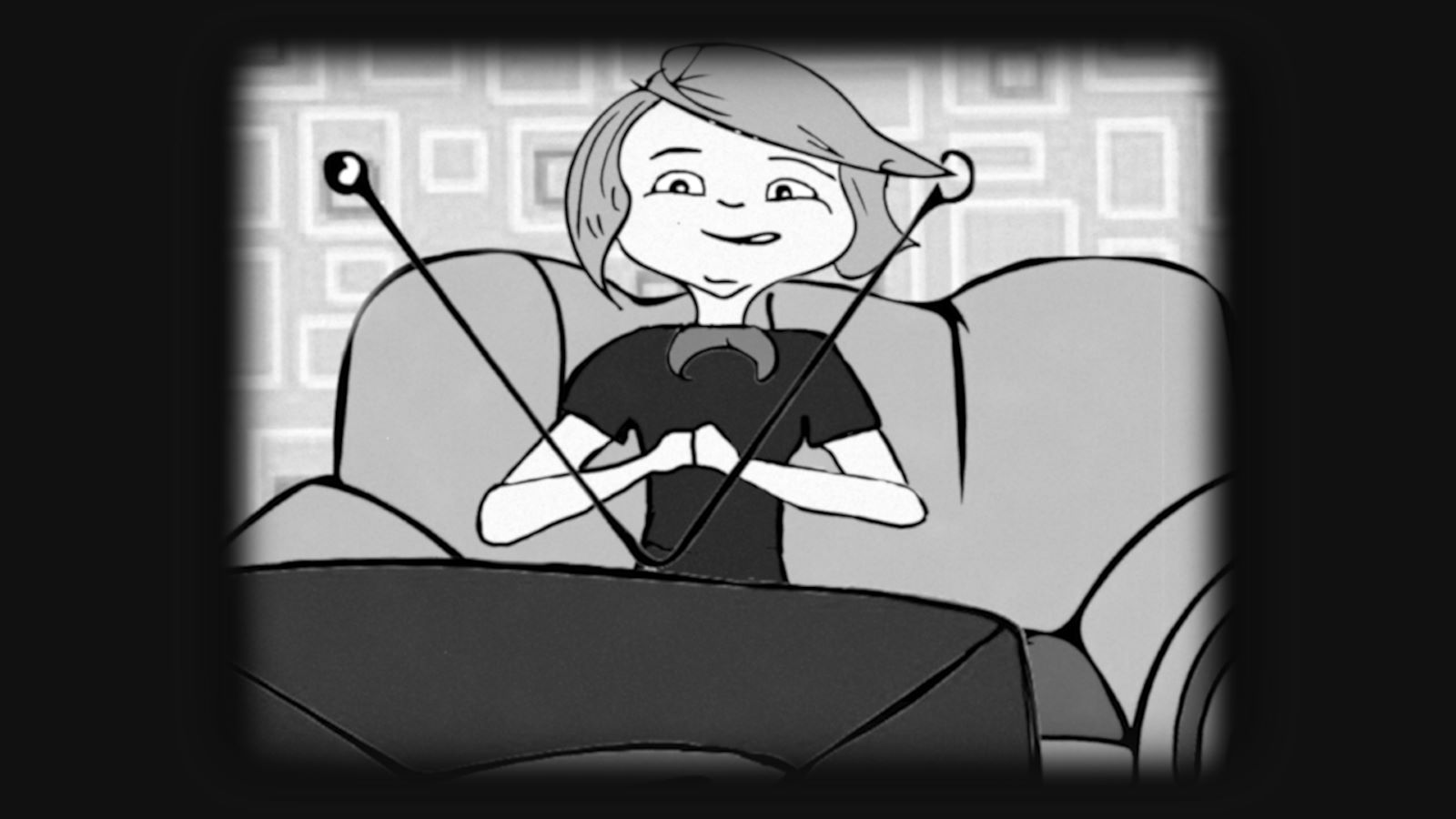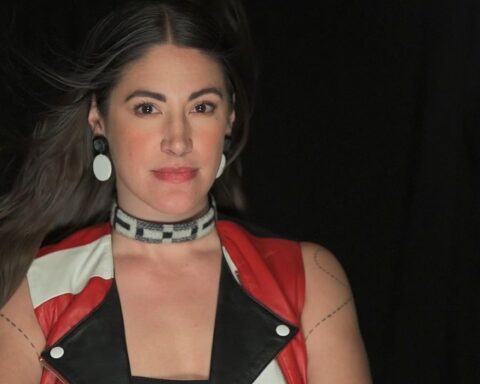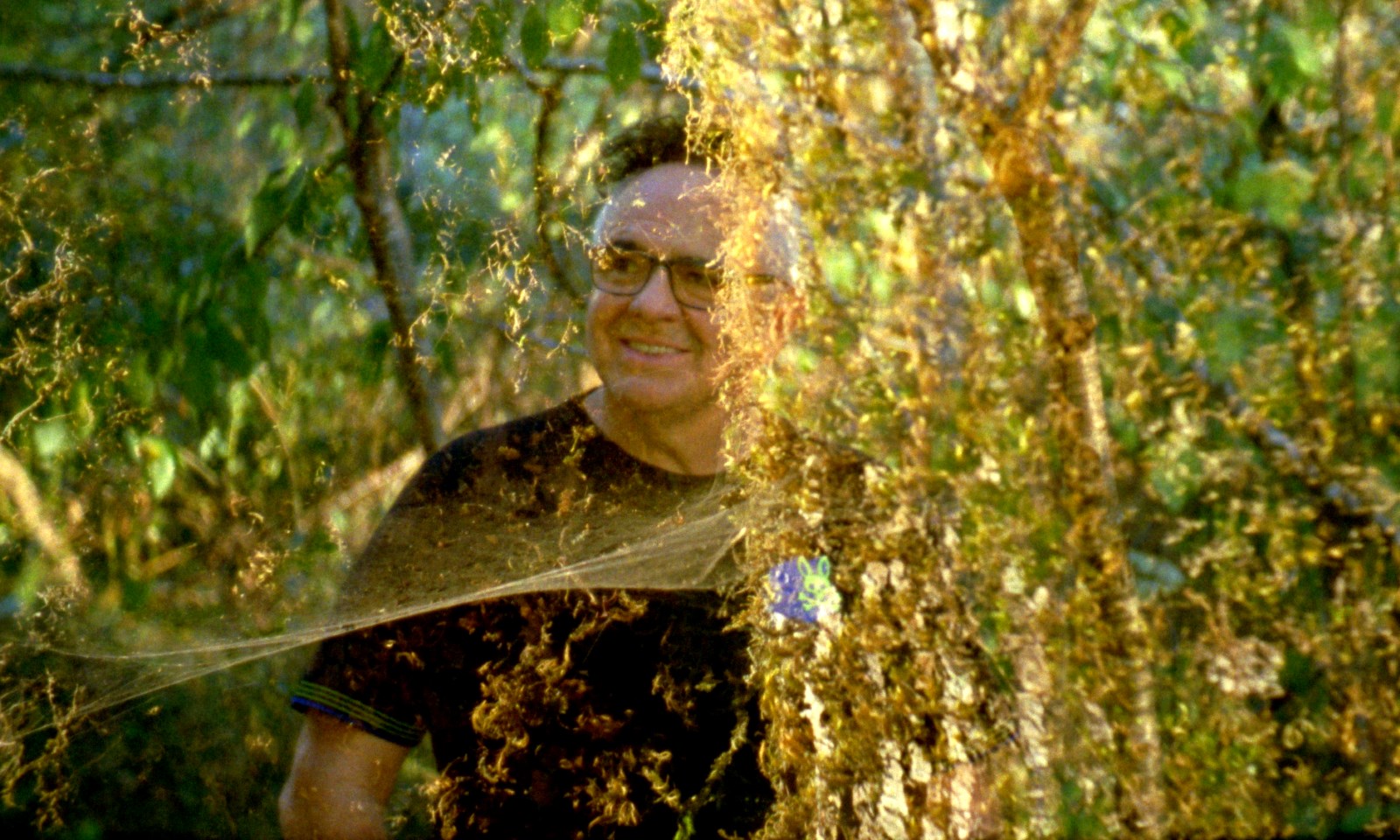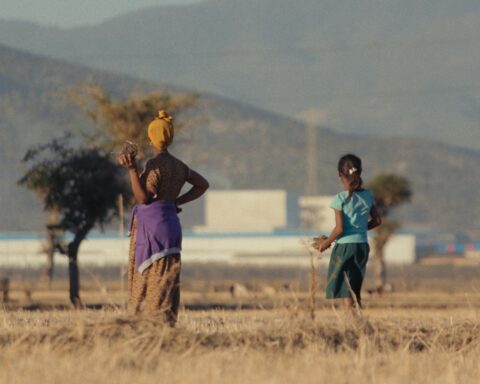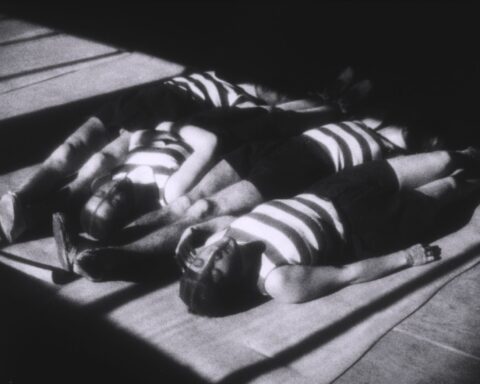2016 was brutal for many reasons, but long before the world watched in horror as Donald Trump won the White House, fans of the series The 100 sat with jaws agape as beloved character Lexa died shortly after finding love. Her death epitomizes the Great Lesbian Massacre of 2016, a watershed moment in popular culture that inspired filmmaker Regan Latimer to probe the power of onscreen representation in Bulletproof: A Lesbian’s Guide to Surviving the Plot.
A hilarious but also hilariously depressing documentary premiering at Toronto’s Inside Out 2SLGBTQ+ Film Festival this week, Bulletproof uses the moment in which lesbian characters on series like The Walking Dead, Jane the Virgin, The Vampire Diaries, and The Magicians joined Lexa in being picked off like figures in an Agatha Christie novel. Latimer offers a personal tour through television. She explores how seeing characters on screen shaped who she is today.
“The spring of 2016, it was just character after character,” Latimer says, speaking with POV via Zoom. “I didn’t watch all of those shows, but of course you heard about it on Twitter and the interwebs.” The effect of the negative representation remains palpable a full movie later.
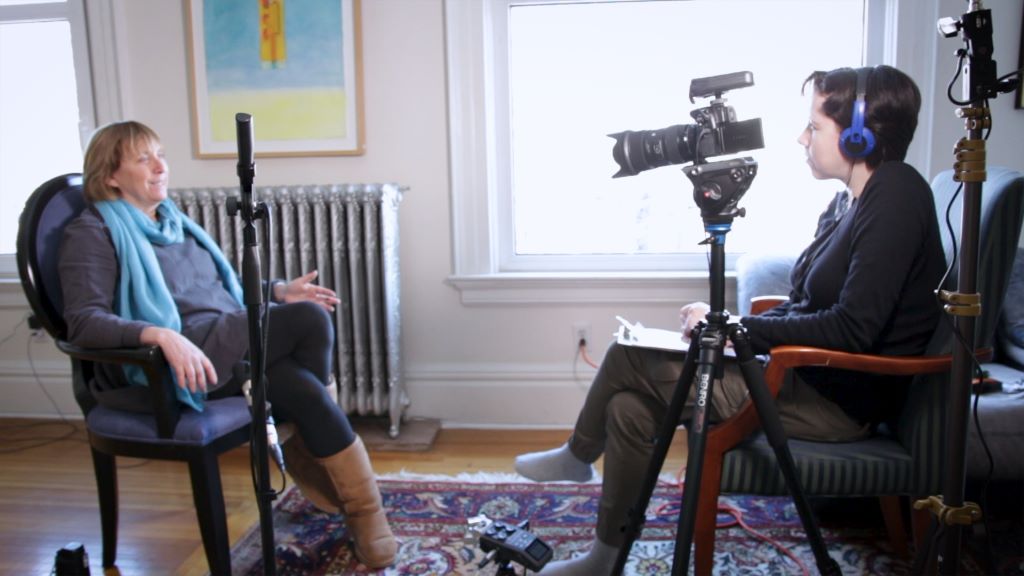
Bulletproof shows how, after Lexa, fans banded together to demand change when someone to whom they grew attached was unfairly axed. For Latimer, it was Denise (Merritt Weaver) on The Walking Dead who (spoiler alert) got an arrow through the eye. “That for me was just like, ‘That’s it: no more,” she ways. “And that’s when the idea [for the film] hit me.”
Bulletproof explores the history of onscreen representation with a chapter by chapter guide to survival. The early years are especially bleak as queer characters don’t appear at all. A mix of talking heads—TV buffs, fellow creators, fans—unpack television’s journey from stereotypes to dynamic and even substantial lesbian characters. This history walks two steps forward and one step back in the best of seasons.
Looking Back to Look Forward
For example, Bulletproof looks to the 1979 premiere of The Facts of Life, which introduced tomboy Cindy Webster (Julie Anne Haddock), who (gasp!) subtly displayed perceived lesbian tendencies through her costuming and interest in sports. The film shows how the series quickly corrected Cindy and set her down the straight and narrow path to heteronormativity.
Latimer says that revisiting shows from her youth proved eye-opening. The problematic portrayal Cindy’s story in The Facts of Life, for example, is something that Latimer notes just didn’t occur to her when she was young. “There’s a lot that does not hold up under today’s standards,” she says, “but a lot of what I got out of those shows still holds up and actually can still be seen in shows today. The way they made characters queer-coded—they’re still doing it.” While Latimer says it was fun to revisit so many shows—Ellen, Buffy the Vampire Slayer, and Xena: Warrior Princess, to name a few—that broke ground in their own ways, subjecting herself to so many outdated, problematic portrayals was exhausting.
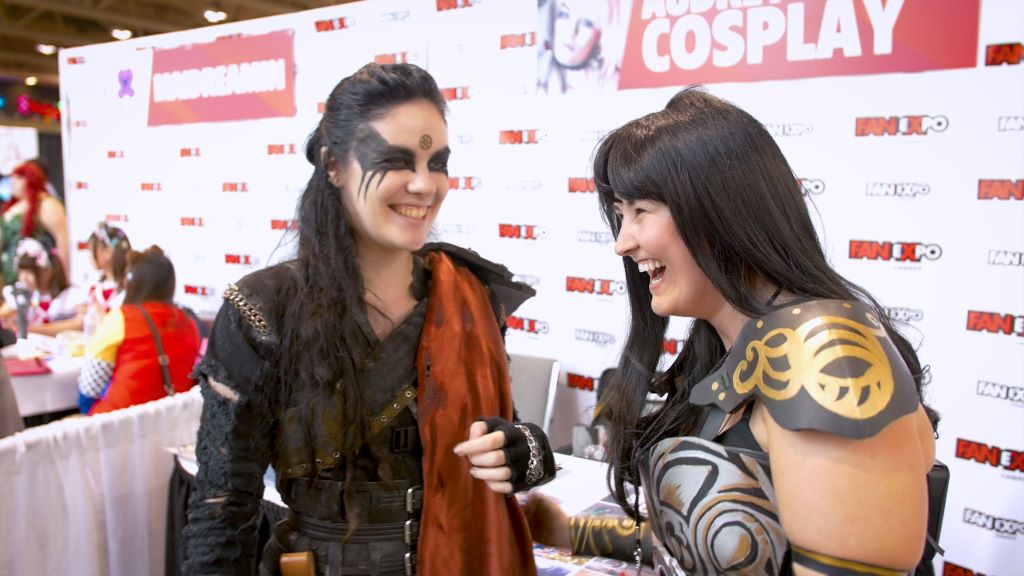
Latimer explains that she concentrated on the portrayals of lesbian characters in series specifically, as opposed to films, partly to sharpen the focus of her inquiry, but also due to viewing habits. “It [TV] was so accessible, and it’s in your living room, so it’s very intimate,” she says.
“These people literally are coming into your homes, whereas with films, you have to seek them out. Back in the day, you had to find a theatre where it was playing, and a lot of queer films were not widely released, so, if you were me, you’d be downloading them and watching them by yourself, but there are so many more shared experiences when it comes to television because it was so accessible.”
Latimer also notes that focusing on queer films would inevitably prove niche and preach to the choir. She illustrates this point using the film But I’m a Cheerleader, whereas a show like Buffy invites wider identification. “A big part of what I wanted to do with the doc was to make these issues more accessible to a straight audience and people who don’t even necessarily know that this problem exists,” Latimer says. Queer audiences, for example, might be more familiar with the “bury your gays” trope of which the Great Lesbian Massacre of 2016 is a part since, presumably, their lived experience suggests they could be more likely to seek out queer content and recognize problematic representation in shows both mainstream and independent.
The Double Bind
At the same time, one watches Bulletproof moving through the history of lesbian representation fairly quickly. The reason? The pool of shows remains relatively small.
A viewer considering the history of queer representation may be more likely to remember shows that broke ground—Will & Grace, Six Feet Under, Queer as Folk—which all favoured gay men.
Latimer admits that the prevalence of stronger and more substantial stories for gay men reveals the double bind that lesbian characters faced. With the heteronormative nature of production favouring male creators and stories, queer series inevitable favoured gay male characters.
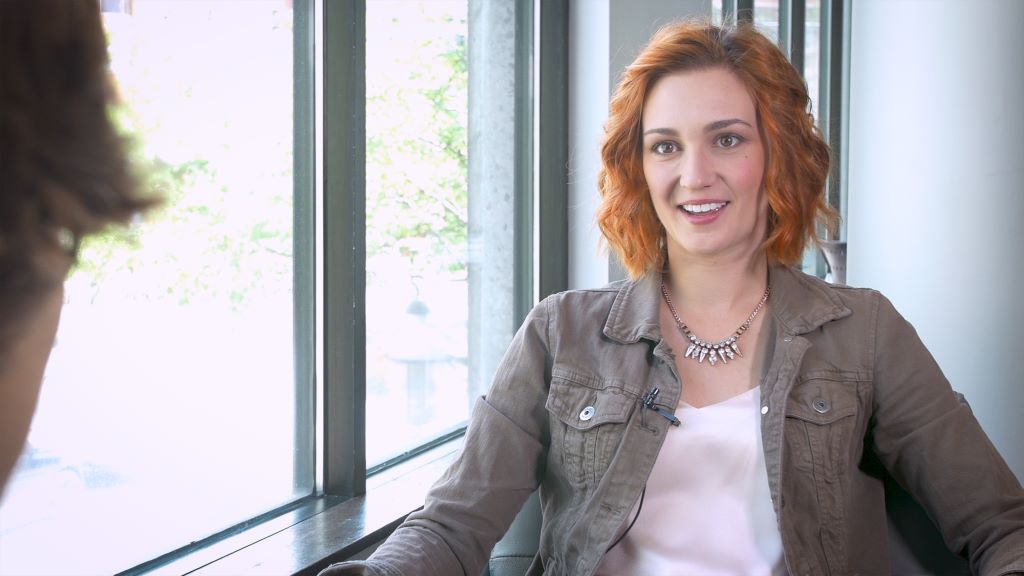
“When you look at the non-queer female characters of a certain era of television, they weren’t great representations, either,” Latimer observes. “The odds of getting a good queer female representation was not great. I feel like the public was more aware more of gay men than they were of gay women. It was easier for them to put gay men into a show than gay women…they were like this tantalising thing for straight men to watch. It’s very different when you try to do a queer lady storyline than queer men.”
However, Latimer adds that many seemingly breakthrough shows for gay male characters weren’t great when it came to representation. “They were very kind of homophobic representations and they rarely ended well,” she notes.
Bulletproof also notes how the best moments for lesbian characters tended to be one-and-done specials. “Looking back on it through the lens of now, those stories were so problematic. But at the time, you just latch on to anything they do, like the lesbian kiss for Sweeps Week. You got this moment, and then that was it,” says Latimer. The documentary notes the trend in which broadcasters would exploit Sweeps Week—the period used to determine ratings for advertiser revenue—by using stories with queer characters, which would make a show seem progressive, controversial, or edgy in order to attract audience numbers.
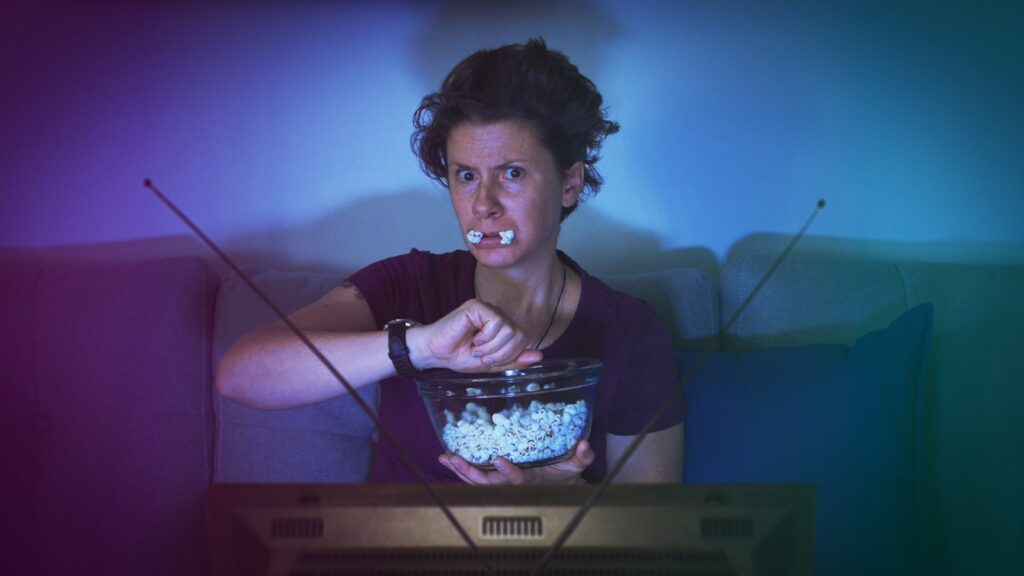
Introducing Lindy
Bulletproof humorously plays with elements of onscreen representation, too, by generally keeping Latimer offscreen. Her onscreen presence is actor Lindy Zucker, who serves as a surrogate. Lindy offers the onscreen “character” of the director and appears in exchanges with interviewees or as the general guide in vérité scenes.
“I didn’t necessarily want do the conventional talking heads part,” Latimer explains. The director adds that Lindy’s presence grew in part due to her own awkwardness appearing on camera and partly to accentuate a playful line of attack. “There was an element with this doc of wanting to hold creators’ toes to the fire on screen,” explains Latimer. The director says that her frequent collaboration with Zucker suggested they could easily tag team the interviews. “I knew she’d be able to manage those conversations,” Latimer says.
A centrepiece of the film, for example, is the interview in which Latimer and Zucker confront The 100 writer Javier Grillo-Marxuach about having his name on the credits for the episode that wrote Lexa’s death sentence. Grillo-Marxuach remains understandably defensive, but a good sport as he endures the questions about betraying the audience.
“I think he was very willing to try to be as helpful as he could to the community and explain what he can do,” Latimer suggests. The film finds a sombre moment, though, when the writer shares how fans of The 100 expressed thoughts of suicide following Lexa’s death.
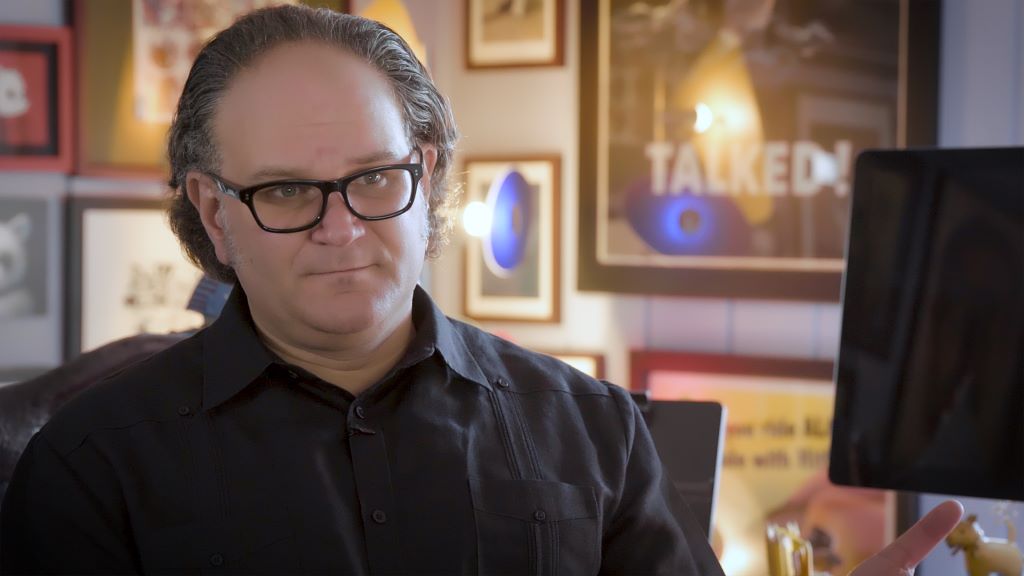
“It was funny, though, because I told him at the start of that interview what I wanted the vibe of the film to be: ‘I’m trying to be funny and uplifting,’” Latimer recalls. “When we were in the middle of the interview and he was talking about people telling him they wanted to kill themselves on Twitter, there was this moment of silence and he’s like, ‘I’m sorry. I really don’t know how I can make this funny.’ And I was like, ‘It’s okay. I will make it work.’ I appreciated his support and honesty.”
Too Many Cooks
The writer’s interview also illustrates the nature of TV production that distinguishes series’ scripting from feature films. Grillo-Marxuach explains how, like many series, The 100 had too many cooks in the kitchen. Showrunners map out character arcs while writers flesh them out and multiple hands twist the narrative along the way. Lexa’s fate, Grillo-Marxuach notes, was predetermined. He shrugs that is just fell upon him to write the specific episode that killed her off. Bulletproof therefore encourage fans not to hate the player, but the game that robs queer characters of authentic lives.
Latimer comes to Bulletproof with some experience of giving these fully-formed lives to queer characters thanks to her web series BJ Fletcher: Private Eye. The series, which ran from 2008 to 2012, starred Zucker as a private investigator who also happened to be a lesbian. Latimer says that the freedom of the web series allowed her team a refreshing level of freedom. “The whole point with that series was to make a queer show that wasn’t about them being queer, they just were,” she says. “There was no hierarchy of cooks. There was no one else to tell us yea or nay.”
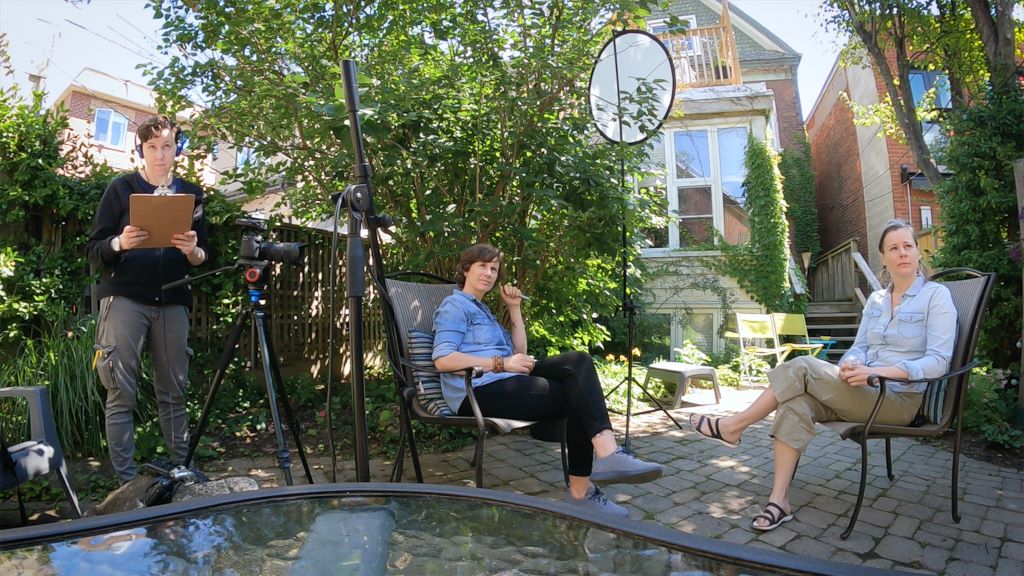
Queerness in CanCon
However, with web series generally following by the wayside, Latimer agrees that streamers and broadcasters have somewhat picked up that terrain without necessarily doing the work for representation. Even looking at the Canadian screen sector, queer characters are relatively absent, especially with series like Schitt’s Creek and Sort of now off the air. “When they need to appeal to all of Canada, there’s not a lot of room for queerness,” says Latimer.
“The ‘bury your gays’ trope is now turning into ‘cancel your gays,’ where the shows that do have reasonable queer characters on them are getting cancelled,” observes Latimer. “A bunch of them are getting cancelled to the point where that’s now a trend. And there’s not a lot of queer female representation, either.” Latimer points to Wynonna Earp, which also ended, while Schitt’s Creek and Sort of keep being held up as the exception despite a dearth of queer women, non-binary, and trans characters.
“One thing I did find in researching all of these shows was that there seemed to be far more leeway for queerness in sci-fi fantasy shows, which is great,” notes Latimer. “But to the average viewer, that’s not real. That’s not a real world.” Aside from the success of Bomb Girls, the film notes, Canadian series don’t have many queer women rooted in reality.
However, Latimer’s survey brings the story full circle with a reminder of the power of seeing oneself on screen. “Representation really does matter. It really does have an impact,” she notes when asked about encountering an authentic character who felt like a mirror. Sometimes one step forward is better than no step at all. But the film encourages the fans and showrunners to keep walking.




